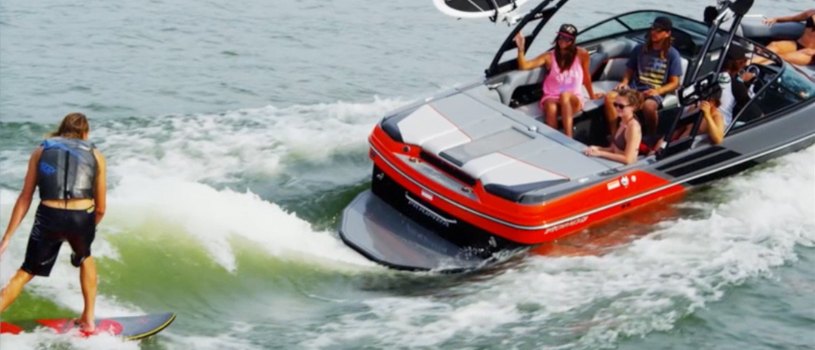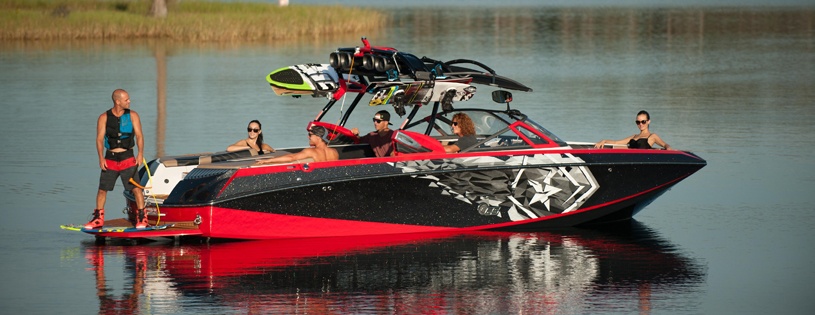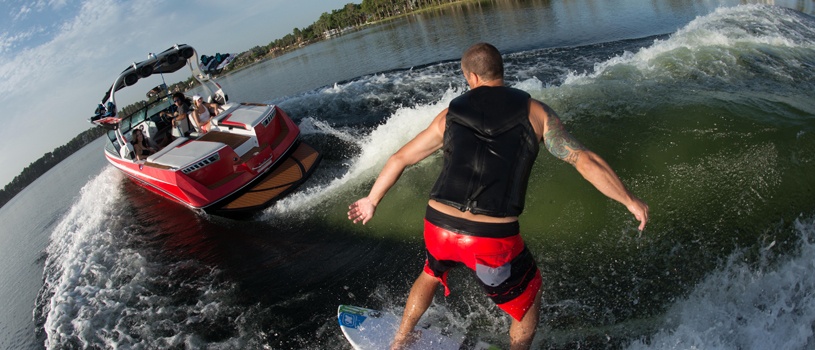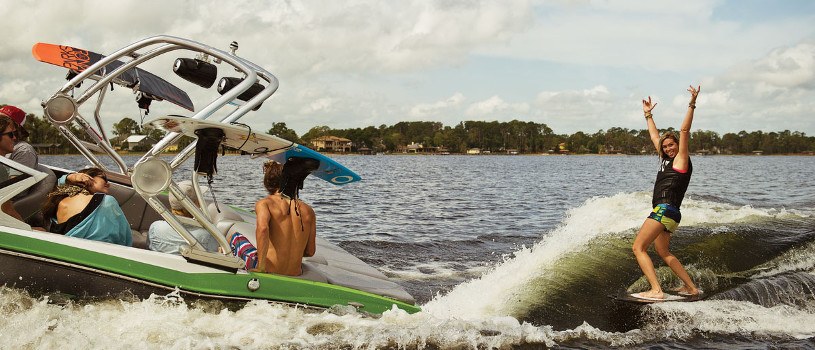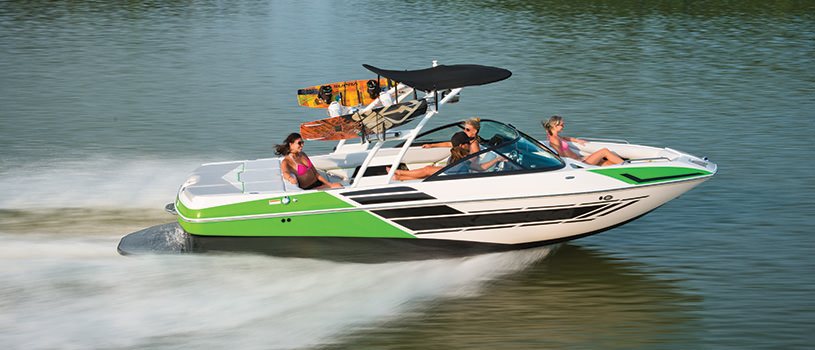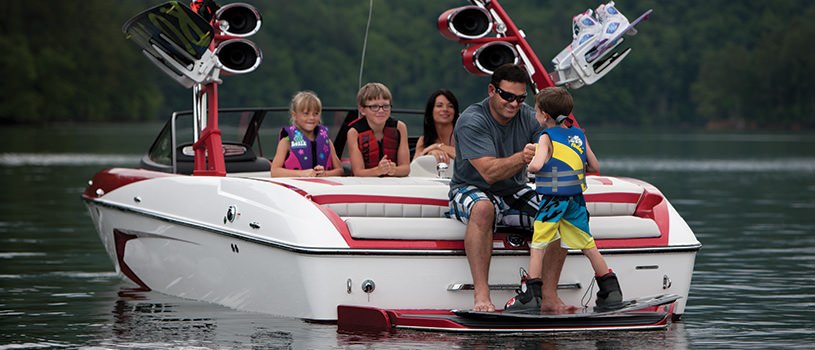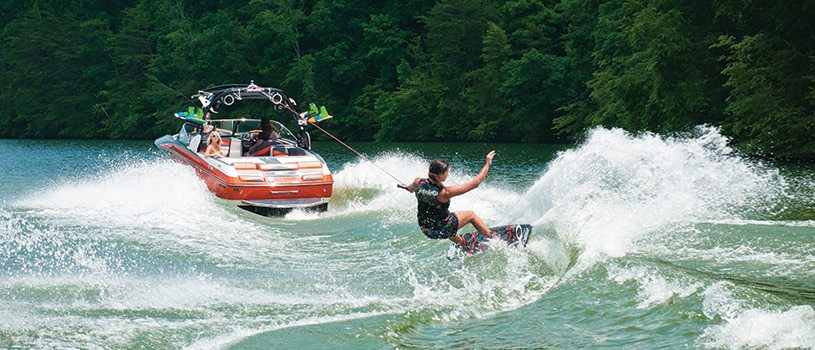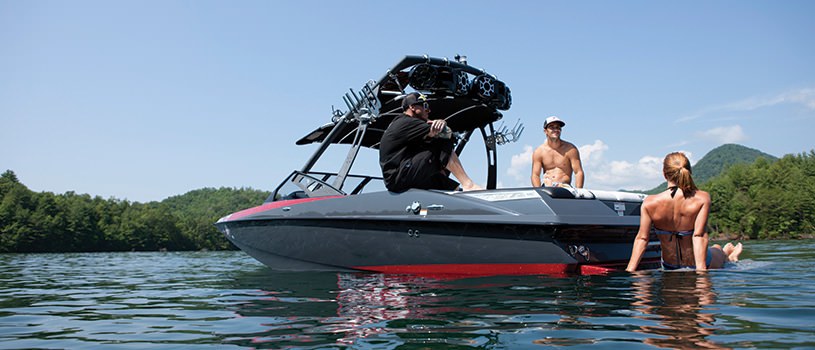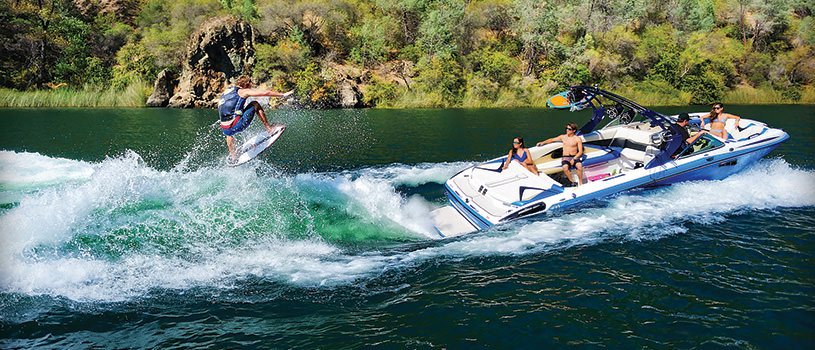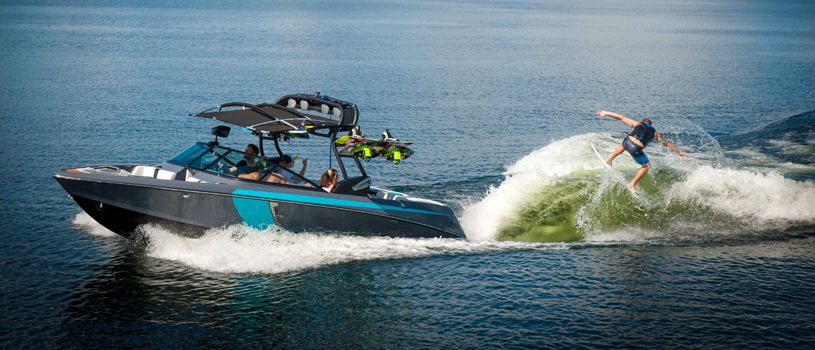ski/wake/surf boats
For the serious ski or wake enthusiast, the performance — and wake — of a dedicated inboard tow sports boat is hard to beat. The classic “ski” boat features a shallow hull angle at the back of the boat. This angle is referred to as the transom deadrise. Ski boats also usually position the engine in the centre of the boat. This combined with the shallow deadrise allow the boat to run at a level attitude. The result is strong acceleration and minimal wake size, allowing slalom skiers to quickly get up and on top of the water and effortlessly carve back and forth behind the boat with minimal interruption.
In contrast, its wake-oriented counterpart features a deeper-v shaped hull (boat bottom), and positions that engine at the back of the boat. The boat’s running attitude is further altered with extra weight, also called “ballast”, or specially crafted tabs or hydrofoils, pumping those wakes up as large as possible and shaping them to create the perfect launch ramp for wakeboarders to achieve their biggest air. Propellers are tucked well under the bottom of the boat for safety and performance; steering is accomplished via a pivoting rudder. This configuration also makes an inboard an ideal choice for the fast-growing sport of wakesurfing, as surfers are positioned in close proximity to the back of the boat. Traditional sterndrives or outboards should never be used for wakesurfing, as their props are far more exposed.Learn more about …
Quick Stats
- watersports
- day cruising
- 14 max
- 5.5 - 8.5 m (18 - 28 ft)
- inboard engine
- sterndrive engine
- trailerable
Boat Brands & Manufacturers
Inboard Engine
Sterndrive Engine
Jet Engine
Dealers and Manufacturers
Sign up to receive information from dealers and manufacturers on various boat types and models.
Contact Dealers and Manufacturers* Price Range varies depending on size, make and model of the boat.


